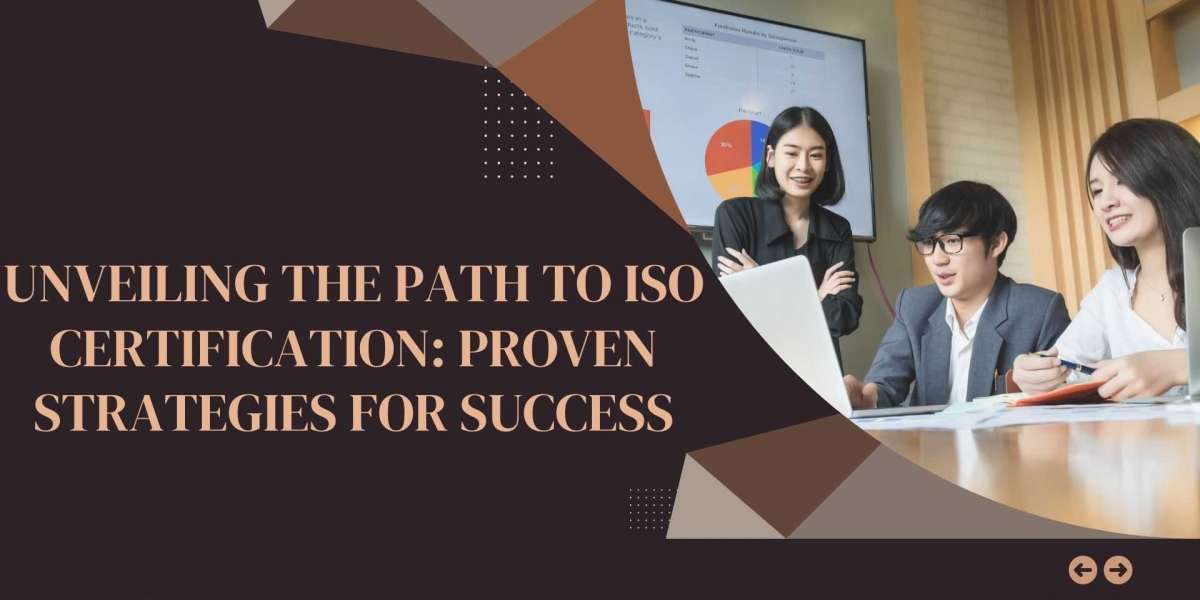In the realm of modern business, maintaining high-quality standards and demonstrating a commitment to excellence is pivotal for success. One of the most recognized benchmarks for quality management is the International Organization for Standardization (ISO) certification. Acquiring an ISO certification is not just a testament to an organization's dedication to quality; it also opens doors to new opportunities, enhances credibility, and fosters trust among stakeholders.
However, navigating the process of obtaining ISO certification can be a challenging endeavor for many businesses. From deciphering the complex requirements to implementing effective strategies, cracking the ISO certification code demands meticulous planning, dedication, and a comprehensive understanding of the certification process.
Understanding ISO Certification
The International Organization for Standardization (ISO) develops and publishes international standards that ensure quality, safety, and efficiency across various industries. These standards provide guidelines and frameworks for organizations to establish robust management systems, covering aspects such as quality, environment, information security, and more.
ISO certification is not mandatory, but it serves as a powerful tool for organizations aiming to distinguish themselves in their respective industries. There are various ISO standards available, including ISO 9001 for quality management, ISO 14001 for environmental management, ISO 27001 for information security, and numerous others tailored to specific sectors.
Strategies for Achieving ISO Certification
Comprehensive Assessment and Gap Analysis
Before diving into the certification process, conducting a thorough assessment of the organization's current practices is crucial. Identifying gaps between existing processes and the requirements outlined in the ISO standards lays the foundation for an effective action plan.
Establishing Clear Objectives and Commitment
Setting clear objectives and gaining commitment from all levels of the organization is fundamental. Leadership buy-in is crucial to allocate resources, support implementation efforts, and foster a culture of continuous improvement.
Formulating a Detailed Implementation Plan
Developing a detailed roadmap that outlines tasks, timelines, responsibilities, and resource allocation is essential. This plan should address necessary changes to processes, documentation, training needs, and internal audits.
Training and Skill Development
Investing in employee training and skill development ensures that everyone understands their roles and responsibilities concerning the new quality management system. Providing adequate training fosters competence and confidence in handling new processes.
Documenting Processes and Procedures
Thorough documentation of processes and procedures in line with ISO standards is critical. This documentation acts as a reference guide for employees and auditors, ensuring consistency and adherence to the established standards.
Conducting Internal Audits
Regular internal audits help in evaluating the effectiveness of the implemented system and identifying areas that require improvement or corrective action. These audits aid in maintaining compliance and readiness for the external certification audit.
Engaging Expert Support
Seeking guidance from consultants or experts experienced in ISO standards can streamline the certification process. Their expertise and insights can significantly enhance the organization's readiness and effectiveness in meeting certification requirements.
Note: You Can Apply for ISO 27001 Certification
Conclusion
Obtaining ISO certification is a significant achievement that demonstrates an organization's commitment to excellence and continual improvement. By following a strategic approach that involves meticulous planning, dedicated implementation, and a focus on continuous enhancement, businesses can successfully crack the ISO certification code.
Remember, the journey towards ISO certification is not merely about meeting standards; it's about embracing a culture of quality, efficiency, and ongoing improvement, thereby positioning the organization for sustained success in today's competitive landscape.











